Luau food | What you can expect from your feast
Luaus as a celebration | A historical context
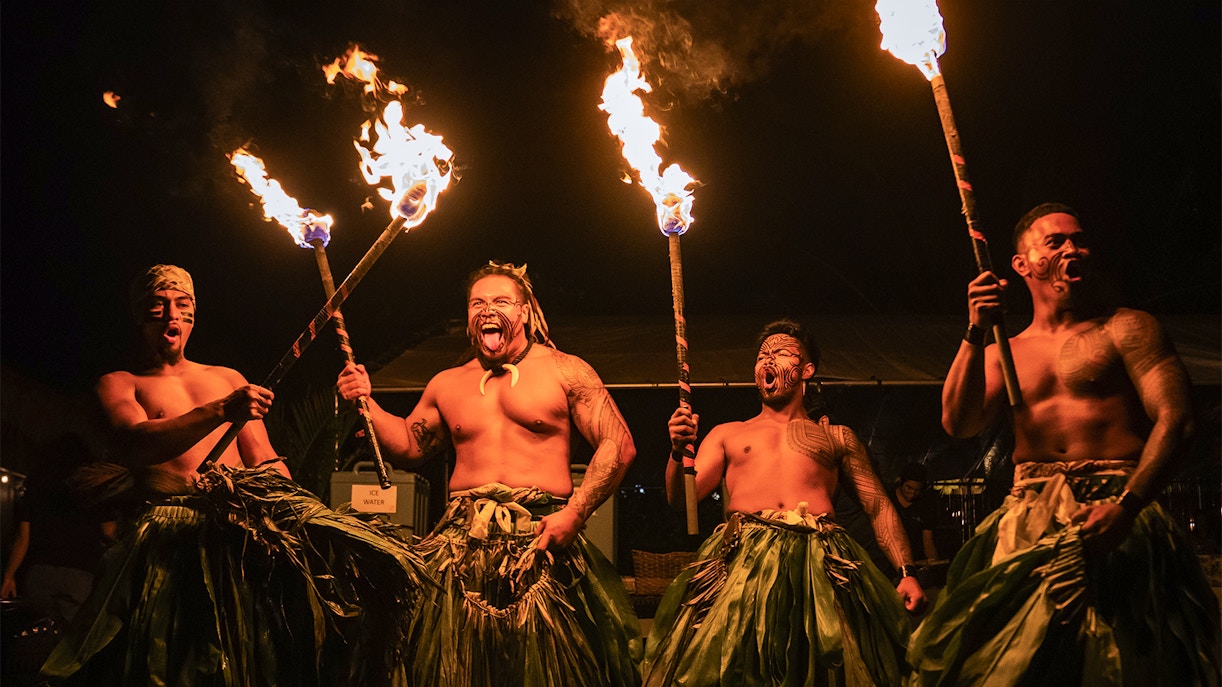
Luaus trace their roots back to ancient Hawaiian traditions, where large feasts were held to mark significant events such as battle victories, seasonal harvests, or other important milestones. “Luau” happens to be named after a popular dish made using taro leaves and meat, and evolved to become a festive celebration of family, community, and abundance. Today, it is a form of cultural expression that combines Hawaiian food, music, and dance, preserving ancient customs while welcoming everyone to celebrate the spirit of Aloha.
Evolution of luau food over the years
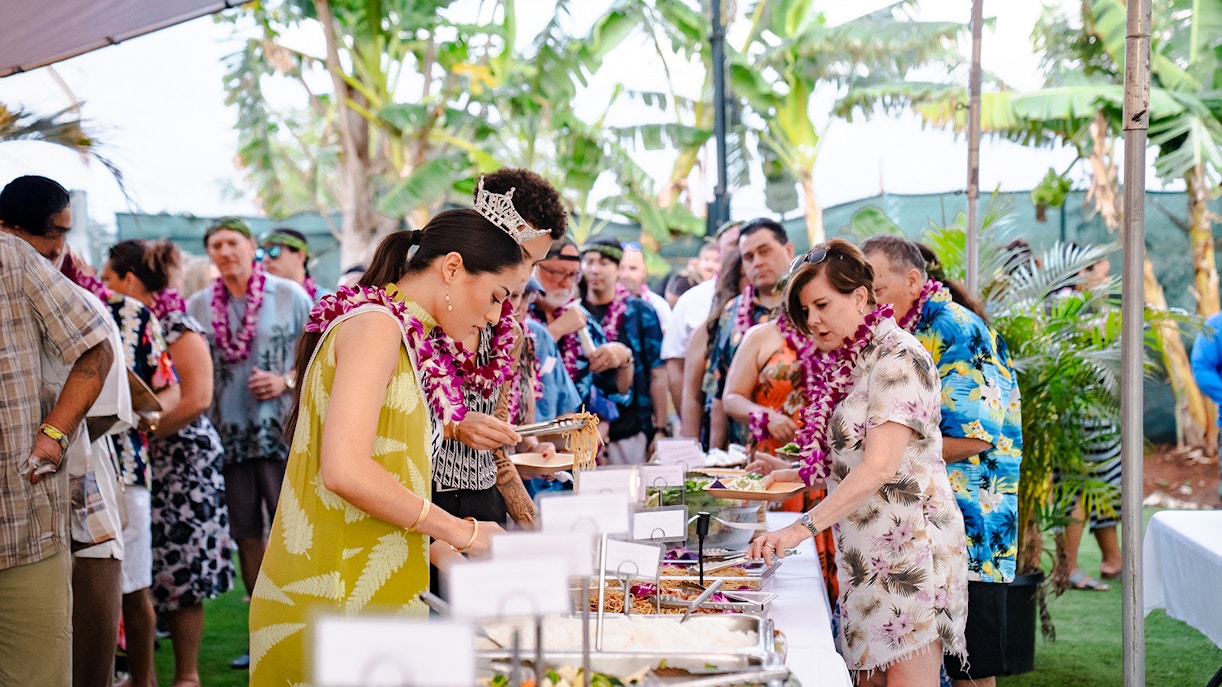
The food served at luau feasts has evolved along with Hawaii’s culture over time. While traditional staples like poi, kalua pig, and laulau still hold strong, today’s luaus are influenced by the people who have moved to the islands.
American comfort foods, Japanese techniques, and Polynesian flavors have all found their place on the luau table, making the experience more inclusive and dynamic. Fried rice, teriyaki chicken, and lomi salmon now sit beside taro and breadfruit, showcasing a fusion of flavors unique to Hawaii’s diverse population.
Some popular items that have been added to the feast include:
- American: Spam musubi, macaroni salad
- Japanese: Teriyaki dishes, tempura vegetables
- Filipino: Adobo, lumpia
- Tahitian/Polynesian: Raw fish preparations like poke
- Chinese: Char siu pork, stir-fried noodles
- Portuguese: Sweet bread, malasadas
Popular luau dishes you might find at your feast
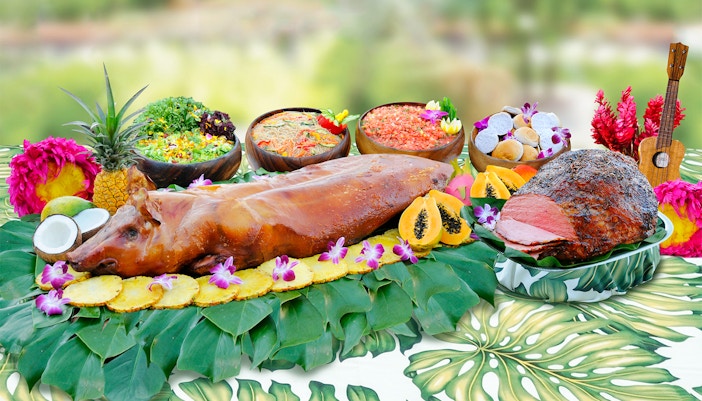
Kalua pig
A whole pig is traditionally cooked in an underground oven (imu) overnight, resulting in tender, smoky, and shredded pork.
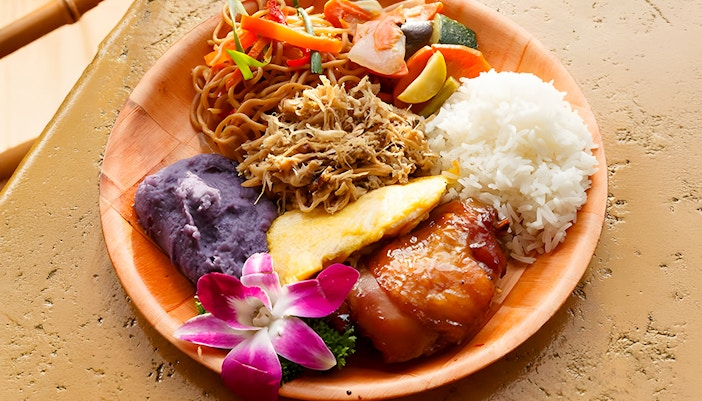
Poi
A Hawaiian staple made from cooked and mashed taro root, often with varying consistencies.
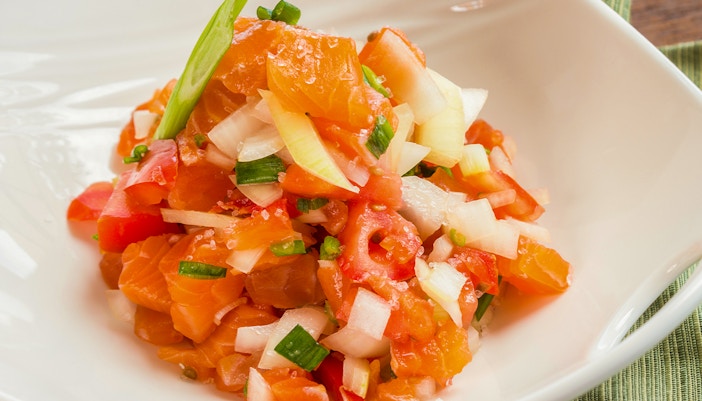
Lomi salmon/lomilomi salmon
A cold dish with salted salmon, tomatoes, and onions.
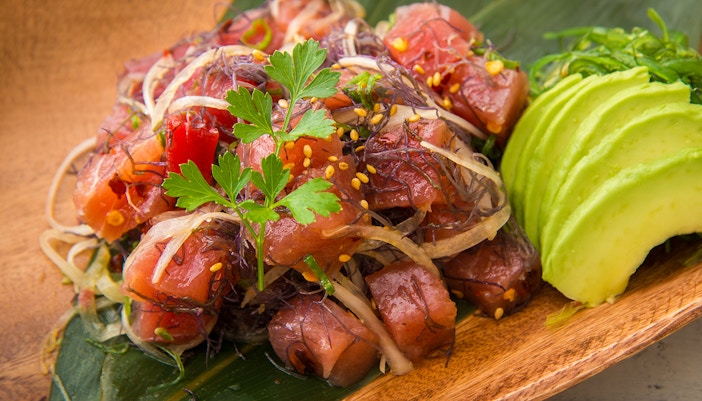
Poke
A dish featuring raw fish (often tuna) cut into cubes and seasoned with soy sauce, sesame oil, and other seasonal ingredients.
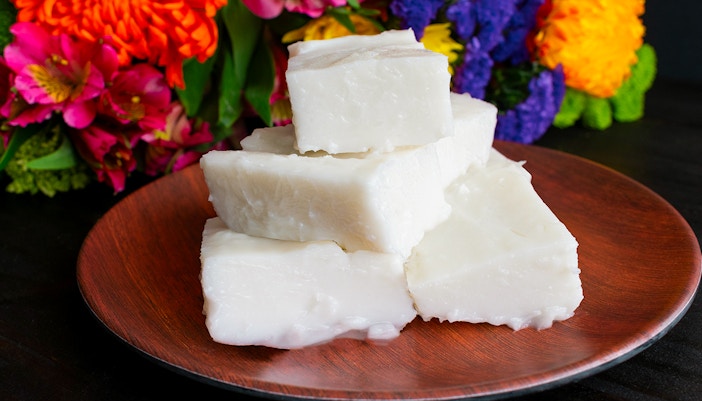
Haupia
A coconut milk-based dessert (either custard or pudding), often served in cubes.
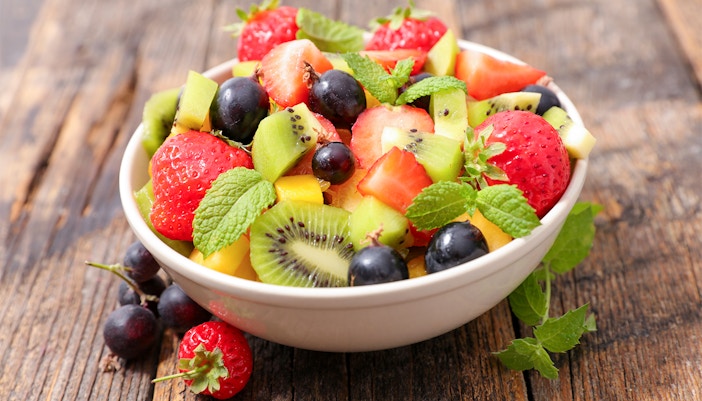
Fresh fruit
Pineapple, mango, and papaya are popular choices, with pineapple being the most prominent one.
Compare your luau menu options
Imu cooking & ceremony | What it means
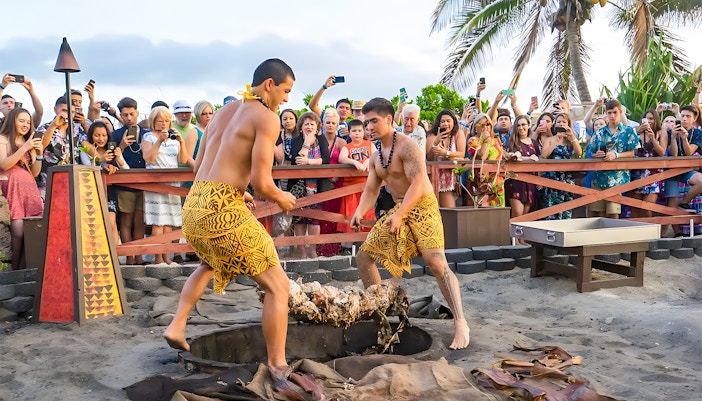
Imu & preparation
The imu is a traditional Hawaiian underground oven used for centuries to slow-cook food, most famously the kalua pig served at luau feasts. An imu is a large pit dug into the earth, lined with porous volcanic stones and kindling. Once the fire heats the stones, food is placed inside, often wrapped in banana or ti leaves for moisture and flavor. The pit is then covered with cloth, mats, and earth to trap the heat and steam. This low-and-slow method results in meat that is tender, smoky, and infused with the essence of the leaves and wood.
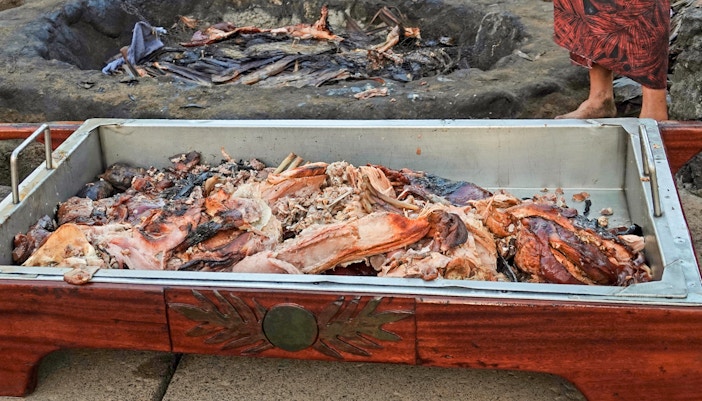
Imu cooking in Hawaiian cuisine
Imu-style cooking is most commonly used to prepare kalua pig, a centerpiece of Hawaiian luaus. The pig is seasoned with Hawaiian sea salt, wrapped securely, and placed into the imu for several hours, often overnight. The long, gentle cooking process makes the meat fall-apart soft, with a distinct smoky flavor that’s difficult to replicate with modern ovens.
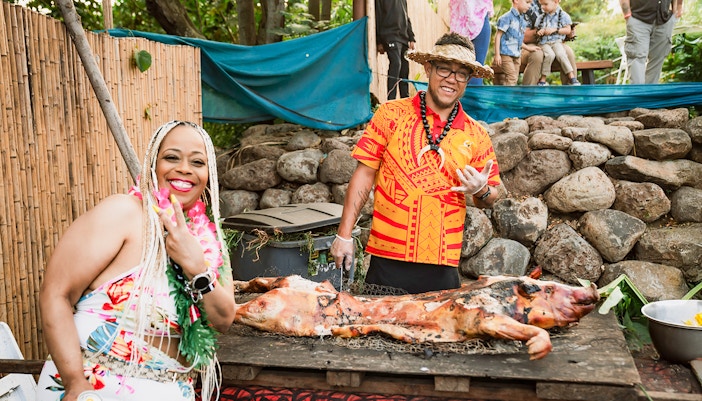
Imu ceremony
The imu ceremony marks the unveiling of the cooked food and is a highlight of traditional luau gatherings. Guests gather as the earth is carefully peeled back, revealing the steaming, fragrant dish inside. It’s both a cultural ritual and a communal moment of anticipation and celebration, honoring Hawaiian heritage and the spirit of Ohana, signifying family and togetherness.
Book Hawaii luau tickets
Frequently asked questions about luau food in Hawaii
Yes, the luau feasts are served buffet-style, with a set menu featuring popular Hawaiian dishes.
Yes, most luaus need to be informed about any dietary restrictions and food allergies at least 24 hours in advance to be able to provide accommodations accordingly.
Yes, the luaus are usually always buffet-style feasts, but sometimes there might be initial table service, or you might get your drinks served at the table.



